We wrote about smudging to clear bad vibes out, and now let’s have some folklore from the Middle East. Brisk business being done in protective amulets at the Carmel Shuk, Tel Aviv (in pre-Corona times). Belief in the Evil Eye, hostile spirits, and bad luck goes back to very ancient times.
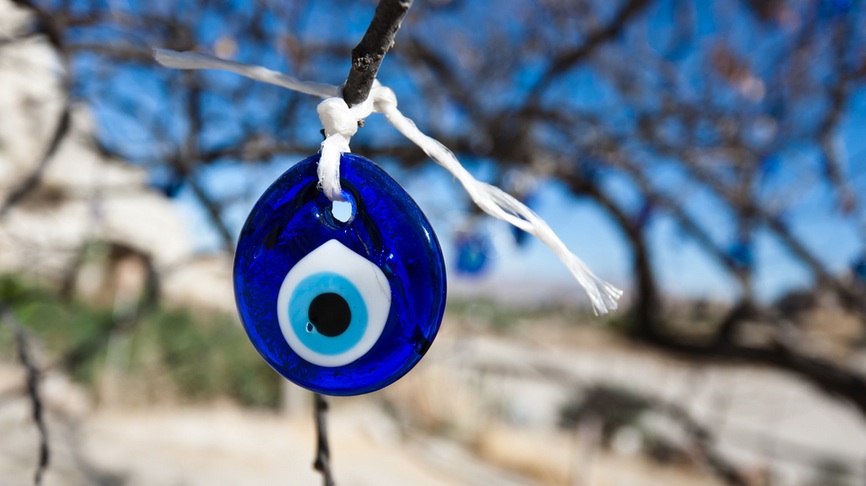
As you see, people believe in the Evil Eye to this day, and are willing to go to some lengths to avert it. Even this Westerner, from decades of living in the Middle East, has come around to the idea that ill-wishing someone, talking about bad things, or feeling jealousy, can invoke bad mojo.
In the Middle East, deflecting these dangers is an involved, emotional, and mysterious business. Here’s a vignette from my Israeli experience.
Sitting at a café, gazing abstractedly out at the street, I noticed a young mother carefully moving her baby carriage out of my field of vision. It took me a minute to realize she thought I was looking at her baby, possibly jealously, and wished to avoid my loaded gaze.
I was insulted; why should she think I, a stranger, was jealous…? But I forgave her a minute later, understanding that naturally, every loving mother wishes to protect her baby. Never mind that she didn’t know me or what I was thinking; the thing was to avoid bad vibes. I’ll bet that pinned to the inside of the baby’s carriage was at least one Hamsah, also known as the Hand of Fatima – the five-fingered amulet that’s said to avert that old Evil Eye, sorcery, and demons.
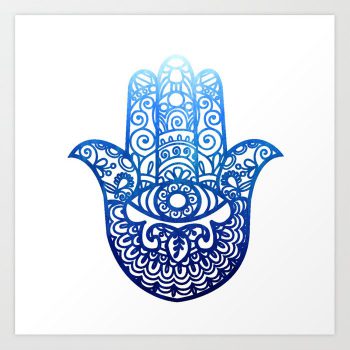
People whose origins are steeped in Islamic cultures invoke the Hamsah charm freely, raising open palms and repeating “Hamsah” five times. I’ve seen this many times with my Moroccan/Tunisian family connections, at weddings, henna celebrations and circumcisions; also in earnest discussions over life issues. And you can expect to see at least one Hamsah amulet hung around the house wherever Middle Eastern traditions live on.
Having a Hamsah amulet displayed on a wall, or keeping a small one in your pocket, is believed to bring good luck. In Israel, the Hamsah motif has moved from traditional to hip. It’s incorporated in jewelry, key chains, artwork, and, naturally, lottery tickets.
The color blue itself is thought to bring peace, prosperity, and safety. Blue beads representing eyes are also a popular device for warding off the Evil Eye.
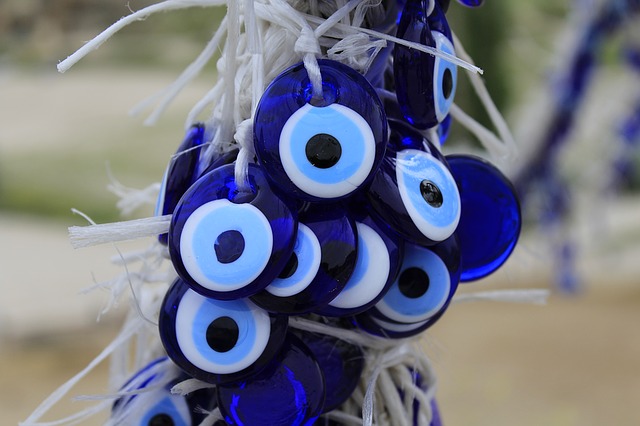
Often a Hamsah will incorporate an eye in the center of its design. A double whammy is to buy a large Hamsah with an Arabic or Hebrew blessing inside it.
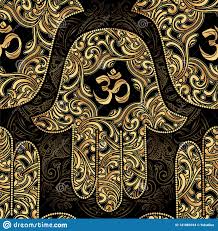
Designs representing fish are sometimes juxtaposed with other devices, fish being symbols of plenty and purity.
You may see people wearing an evil eye ring as well as a red thread around the left wrist; these are sold by street peddlers who claim that the threads are blessed through kabbalistic methods. This isn’t ancient practice; no more than about 120 years old. The threads are to be tied by seven knots. In some places in Israel, “blessed” red threads are for sale at the tombs of great rabbis and sages. Vendors claim that they have walked seven times around the tomb holding the threads and praying for all good things to happen to people who wear them. And good luck to the customers, I say.
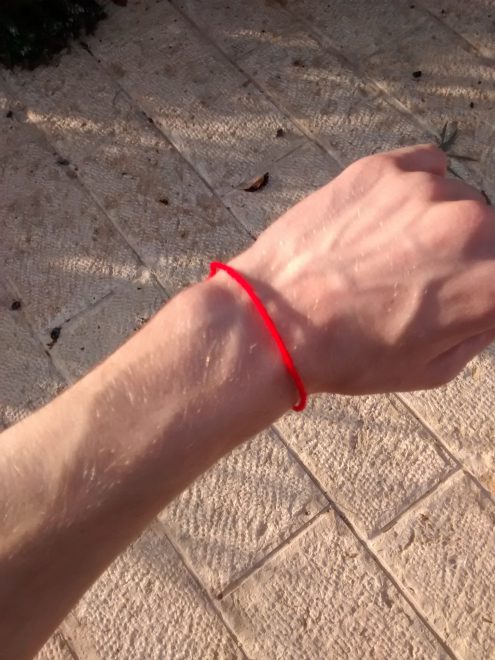
The red thread was briefly fashionable among some celebrities when Madonna began to wear them.
Jewish Eastern European tradition is to spit three times to avoid bad luck. Nowadays, people are content to simply say a phrase of deterrence in Yiddish (”K’neineh horeh”) or Hebrew (”Bli ayin harah”), meaning “No evil eye!” followed by a symbolic, spoken, “Tfu, tfu, tfu!”
Either phrase can be said in earnest, or simply politely, to show the person you’re speaking to that you have no bad intentions toward them. As in: “There haven’t been any new Corona infections in my town, tfu tfu tfu!” Or: “What a pretty child you have, tfu tfu tfu!” It’s the Ashkenazic equivalent of saying “Hamsah!” five times.
In Jewish thought, merely saying the correct name of an illness should be avoided. These days, it’s mostly the Ultra-Orthodox who say “The illness” when referring to cancer.
Maybe I’ve caught on to that way of thinking; I really dislike saying “Corona virus,” or even the more genteel-sounding “Covid-19.” In conversation, I refer to the disease scourging the world today as “the pandemic.” Do I believe that saying its name might bring it closer? Well, that lays a cold finger on the little place in the heart where superstition lurks. I just don’t like saying it.
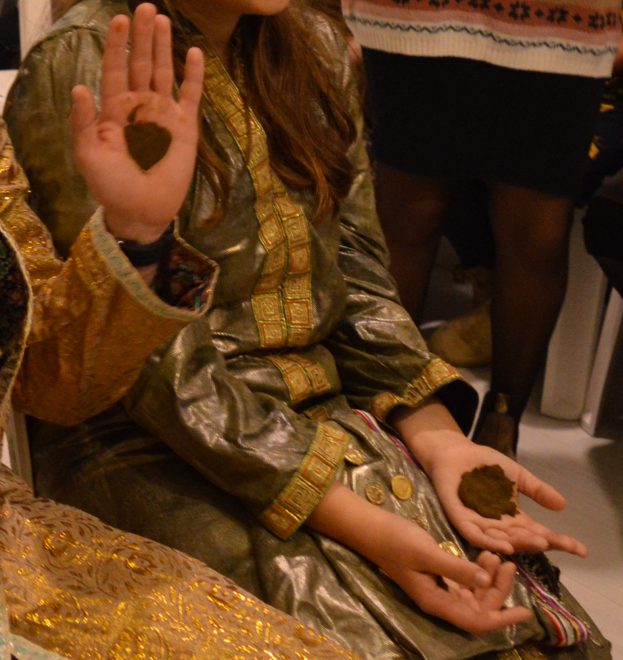
A large dot of henna in the palm of the hand is also a sign of celebration and deterrence of the Evil Eye. A Yemenite friend brought a basin full of the orange-colored paste to an engagement party I attended, and insisted on smearing it on the young couple’s palms. I asked for some too, to be polite; so did many others.
Did it work? Well, years on, the couple are still devoted to each other and raising a family – tfu, tfu, tfu.
___________________
Images: Blue Hamsah by KOOVOX via Society6; Blue bead cluster Image by zehra saldirdak via Pixabay; Downward – pointing Hamsah with Arabic via Dreamstime.com; Henna on palms by Miriam Kresh; Red thread on left wrist via Wikipedia


